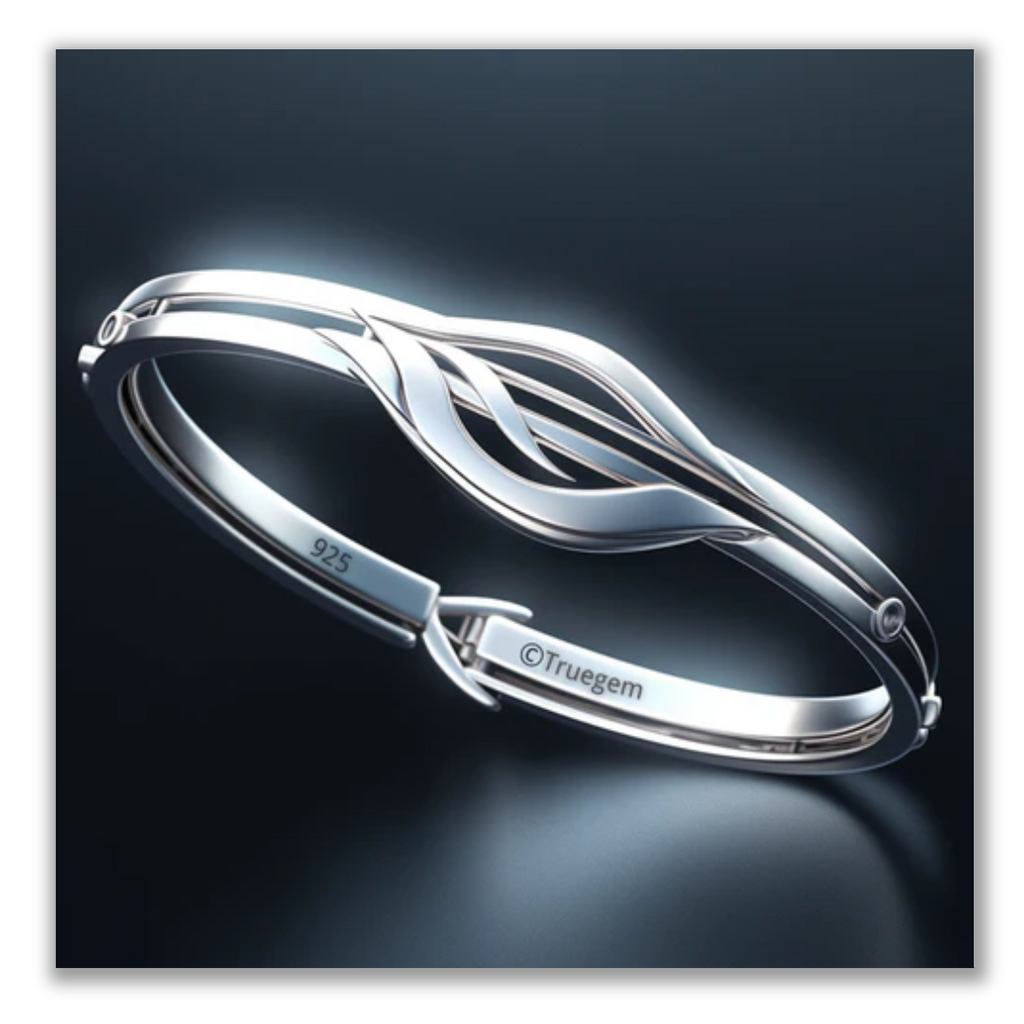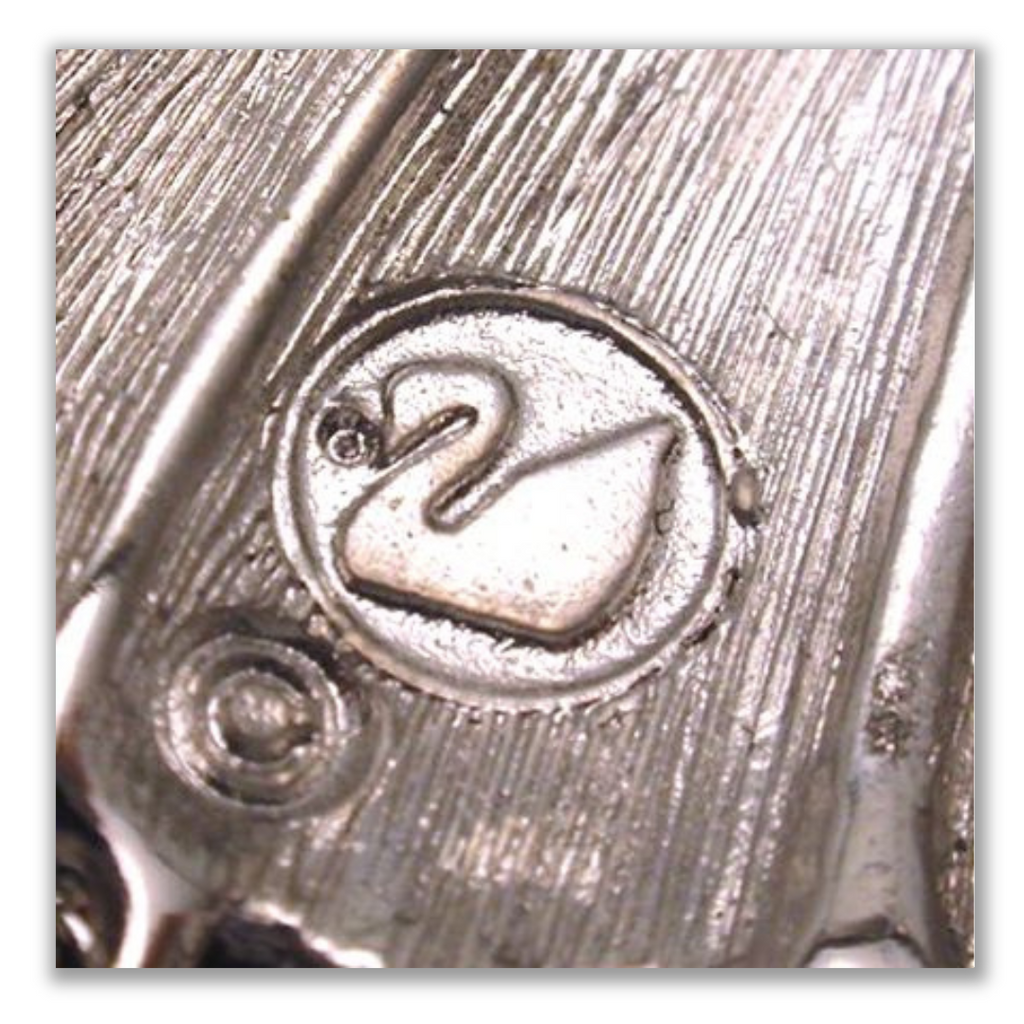Unraveling the Secrets of Precious Metal Identification

Introduction
The Significance of Hallmarks in Jewelry
Jewelry has adorned humans for millennia, representing wealth, status, and personal style. Throughout history, hallmarks have played a crucial role in identifying the precious metals used in crafting these exquisite pieces. Understanding the significance of these tiny symbols can unlock a wealth of information about a jewelry item, such as its authenticity, origin, and purity.
Historical Evolution of Hallmarks
The concept of hallmarking can be traced back to ancient civilizations where craftsmen used unique markings to signify their work. Over time, hallmarking evolved into a formal system that laid the foundation for today's jewelry identification standards.

Understanding Jewelry Hallmarks

Antique Victorian Cuff Bangle Sterling Silver Dated 1893
What are Hallmarks?
Hallmarks are official marks or stamps impressed on jewelry items to indicate the metal's authenticity, purity, and origin. They are a guarantee that the piece meets specific legal standards, assuring buyers of the quality of the metal they are purchasing.
Components of a Hallmark
A typical hallmark comprises several components, including purity marks, date marks, manufacturer marks, and assay office marks. Each element conveys vital information about the jewelry piece.
Common Precious Metals Used in Jewelry
Gold, silver, platinum, and palladium are the most prevalent metals used in fine jewelry. Understanding the unique properties of each metal helps in deciphering their respective hallmarks.

The Purpose of Hallmarks

Authentication and Quality Assurance
Hallmarks serve as a form of quality control, ensuring that jewelry buyers get what they pay for and providing confidence in the item's authenticity.
Identifying the Manufacturer or Designer
Manufacturer marks within a hallmark can identify the specific company or artisan responsible for creating the jewelry, adding an element of traceability and provenance.
Date and Origin Identification
Date marks on hallmarks can reveal the age of a piece, while assay office marks indicate the location where the jewelry was tested and certified.

Hallmarking Process and Regulations

Cartier Hallmark
Hallmarking is a process used to certify the quality and purity of precious metals, such as gold, silver, platinum, and palladium. The hallmark serves as an official mark indicating that the metal meets specific legal standards for fineness or purity. This process ensures that consumers can trust the quality of the metal they are purchasing and provides protection against fraud.
The hallmarking process typically involves the following steps:
-
Assaying: The precious metal article is tested to determine its composition and purity. Assayers use various methods, such as fire assay or instrumental analysis, to assess the metal's content accurately.
-
Marking: After verifying the metal's purity, an official hallmark is applied to the article. The hallmark may include the following information:
- Fineness/purity of the metal (e.g., 24K, 18K, 925, etc.)
- Maker's mark or manufacturer's mark
- Assay office mark: This indicates the office responsible for the hallmarking and testing process.
-
Quality Control: Hallmarking is a regulated process carried out by government or independent assay offices. These offices ensure that the hallmarking process is conducted accurately and according to established regulations.
Hallmarking Regulations:
The regulations for hallmarking vary from country to country, and each country may have its own set of standards and marks. In general, hallmarking is overseen by government agencies or independent assay offices that are responsible for enforcing hallmarking laws and regulations. These agencies set the standards for purity and ensure the quality of the hallmarked articles.
In some countries, hallmarking is mandatory for precious metal articles above a certain weight, while in others, it may be voluntary. The use of standardized marks helps maintain consistency and consumer confidence in the precious metal market.
It's essential for manufacturers, sellers, and consumers to be aware of the hallmarking regulations in their respective countries to ensure compliance with the law and to make informed decisions when buying or selling precious metal articles.
Keep in mind that hallmarking regulations and practices may change over time, so it's always a good idea to consult the latest information from official sources or hallmarking authorities in your country to stay updated on the current regulations.

Decoding Hallmark Symbols

Jewelry Maker's Marks
Decoding hallmark symbols can be a bit complex, as they often involve various marks and numbers that provide specific information about the precious metal article. Below are some common elements found in hallmark symbols and their meanings:
-
Fineness/Purity Mark: This mark indicates the purity or fineness of the metal and is usually expressed as a three-digit number. For example:
- 24K gold is typically marked as "999," meaning it is 99.9% pure gold.
- 18K gold might be marked as "750," indicating it is 75% pure gold.
- Sterling silver is often marked as "925," which means it contains 92.5% pure silver.
-
Maker's Mark/Manufacturer's Mark: This mark represents the unique identifier of the manufacturer or the maker of the precious metal article. It can be in the form of initials, a name, a logo, or a specific symbol.
-
Assay Office Mark: This mark identifies the assay office that tested and certified the precious metal article. Different countries have various assay offices, each with its unique mark. The assay office mark ensures the article complies with the standards set by the regulatory body.
-
Date Mark/Letter Mark: Some hallmarking systems use a date letter or a specific symbol to indicate the year the article was hallmarked. The date letter changes each year, allowing the buyer to know the age of the piece.
It's important to note that the specific symbols and marks can vary between different countries and regions, and the above examples are just general representations. To accurately decode hallmark symbols, you need to refer to the hallmarking regulations and standards specific to the country where the article was hallmarked.
If you have a piece of jewelry or a precious metal article with a hallmark that you'd like to decipher, I recommend consulting a local jeweler or an official hallmarking authority in your country for assistance. They will be able to provide you with accurate information about the markings on your item.

Famous Hallmarking Systems Around the World

Hallmarks on Period Jewelry
Several countries have established famous hallmarking systems that are widely recognized for their quality standards and trustworthiness. Some of the most renowned hallmarking systems around the world include:
-
United Kingdom (UK) - Assay Office of the United Kingdom: The UK has a long history of hallmarking, dating back to the 13th century. The hallmarking system in the UK is overseen by several Assay Offices, including the ones in London, Birmingham, Sheffield, and Edinburgh. Each Assay Office has its unique marks, and the system is known for its strict standards and reliable identification.
-
Switzerland - Swiss Assay Offices: Switzerland is famous for its fine watchmaking and jewelry craftsmanship. Swiss hallmarking is recognized for its precision and is commonly associated with luxury timepieces and high-quality jewelry. Hallmarks used in Switzerland often include the fineness mark and the maker's mark.
-
France - Bureau de la Garantie: The French hallmarking system is overseen by the Bureau de la Garantie in Paris. France has a rich heritage in jewelry and luxury goods, and the hallmarking system ensures the quality and authenticity of French-made precious metal articles.
-
Germany - German Assay Offices: Germany has a strong tradition of craftsmanship and manufacturing excellence. The hallmarking system in Germany is known for its efficiency and reliability, and it includes marks that indicate the metal's purity and the manufacturer's identity.
-
Italy - Italian Assay Offices: Italy is renowned for its gold and silver craftsmanship. The hallmarking system in Italy is designed to guarantee the authenticity and quality of Italian-made precious metal articles, and it includes marks that denote the purity and origin of the item.
-
USA - United States Assay Offices: The United States has several Assay Offices responsible for hallmarking precious metal articles. One of the most well-known is the New York Assay Office. The U.S. hallmarking system is essential for maintaining consumer confidence in the jewelry market.
-
India - Bureau of Indian Standards (BIS): India has a mandatory hallmarking system overseen by the Bureau of Indian Standards (BIS). The hallmarking regulations have been put in place to ensure the quality and purity of gold and silver jewelry sold in the country.
These hallmarking systems are just a few examples of countries that have established reputable processes for certifying precious metals. Each system may have its unique marks and regulations, but their primary purpose is to protect consumers and maintain trust in the precious metal market.

Collecting Hallmarked Jewelry

Collecting hallmarked jewelry can be a rewarding and enjoyable hobby. Hallmarks provide valuable information about the quality and authenticity of precious metal articles, making them highly sought after by collectors and enthusiasts. Here are some tips for collecting hallmarked jewelry:
-
Understand Hallmarking Systems: Familiarize yourself with the hallmarking systems of different countries or regions. Each system has its own unique marks and regulations. Learn about the different symbols and what they signify, such as purity, assay office, and date marks.
-
Research and Study: Invest time in researching the history of hallmarking, famous hallmarking centers, and renowned jewelry manufacturers. Study books, online resources, and museum collections to gain knowledge about different types of hallmarked jewelry.
-
Authenticity and Verification: When collecting hallmarked jewelry, always ensure that the hallmarks are genuine and accurate. Buy from reputable dealers or auction houses to avoid counterfeit or misrepresented pieces.
-
Diversify Your Collection: Explore different types of hallmarked jewelry, such as rings, necklaces, bracelets, and earrings. Consider collecting pieces from different time periods, styles, and countries to create a diverse and well-rounded collection.
-
Condition and Preservation: Inspect the condition of the jewelry pieces carefully. Look for signs of wear, damage, or repair. Properly store and care for your collection to maintain its value and beauty over time.
-
Focus on Themes or Periods: Consider collecting jewelry with specific themes, such as Art Deco, Victorian, or Modernist styles. Focusing on a particular era or style can give your collection coherence and depth.
-
Join Collector Communities: Connect with other collectors and enthusiasts through online forums, social media groups, or local collector associations. Sharing knowledge and experiences with fellow collectors can enhance your understanding of hallmarked jewelry.
-
Attend Auctions and Exhibitions: Attend jewelry auctions, antique fairs, and exhibitions to discover unique pieces and learn from experts in the field. Auctions can be an exciting way to acquire rare and valuable hallmarked jewelry.
-
Document Your Collection: Keep a detailed record of each piece in your collection. Note the hallmark marks, date of acquisition, provenance, and any other relevant information. Proper documentation will be valuable for insurance purposes and future reference.
-
Appreciate the Beauty and Craftsmanship: Beyond their financial value, hallmarked jewelry pieces often have unique designs and exquisite craftsmanship. Take the time to appreciate the beauty and artistry of the jewelry you collect.
Remember that the value of hallmarked jewelry can fluctuate based on factors such as metal prices, rarity, historical significance, and demand. Collecting hallmarked jewelry should primarily be driven by your passion for the pieces and the joy of discovering and owning these unique treasures.

Conclusion
In conclusion, hallmarking plays a crucial role in the jewelry industry by providing consumers with confidence in the quality and authenticity of precious metal articles. Through a standardized system of marks, hallmarking verifies the purity of metals like gold, silver, platinum, and palladium, and identifies the manufacturer or designer. The process is overseen by government or independent assay offices in various countries, ensuring compliance with strict regulations.











